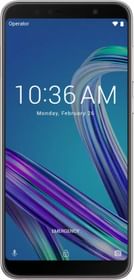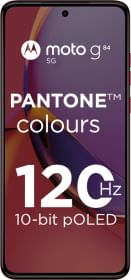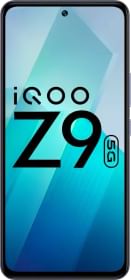The new Zenfone Max, is an incremental update which sticks to the same big battery formula, and pushes new guts in the familiar body casing. The Zenfone Max, is an attempt to bring one of the bestselling Zenfone variants in India up to speed.
We recently reviewed Zenfone Max, and felt that it made for a worthy recommendation for anyone who prioritizes big battery phones. Several weeks have passed since, and the affordable smartphone segment has been replenished with several new and enticing offerings, across popular brands. In light of all that has changed, we had a second run at Zenfone Max, the upgraded variant of course, and here are our 2 cents after a week of using it as our primary handset.
Also Read: Asus Zenfone Max (16GB) FAQ
Asus Zenfone Max Key Specifications And Features:
| Model | Asus Zenfone Max (New) | Asus Zenfone Max |
| Display | 5.5 Inch, 720p HD | 5.5 Inch, 720p HD |
| Processor | 1.5 octa-core Qualcomm Snapdragon 615; Adreno 405GPU | 1.2 quad-core Qualcomm Snapdragon 410; Adreno 306 GPU |
| RAM | 2GB/3GB | 2GB |
| Internal Storage | 32GB (24.21 GB Free), expandable up to 64GB | 16GB, expandable up to 64GB |
| Software | Android 6.0 Marshmallow based ZenUI | Android 5.0 Lollipop based ZenUI |
| Primary Camera | 13 MP, f/2.0, laser autofocus, dual-LED (dual tone) flash, 1080p Videos | 13 MP, f/2.0, laser autofocus, dual-LED (dual tone) flash, 1080p Videos |
| Secondary Camera | 5MP | 5MP |
| Dimensions and weight | 156 x 77.5 x 10.6 mm, 202 Grams | 156 x 77.5 x 10.6 mm, 202 Grams |
| Battery | 5000mAh (non-removable) | 5000mAh (non-removable) |
| Others | 4G LTE, Dual SIM | 4G LTE, Dual SIM |
| Price | Rs 9,999/12,999 | Rs. 8,999 |
Pros
- Latest Android Marshmallow software
- Great battery back-up
- Reasonable camera performance
- Good display quality
- Good performance
Cons
- Heavy
- No fingerprint sensor
- No fast charging
- Speaker grill on the rear
A few more jazzy colors
The pleather back on Zenfone Max shall now be available in a couple more bright colors (Blue and Orange). Our review unit, however, sports the familiar black one. Apart from added color options, the design remains same. The Zenfone Max is still quite heavy, but that’s an acceptable trade-off for the added battery juice. Besides, the curved design is quite ergonomic, and ensures that you get used to the weight after a short period of usage.
The display isn’t full HD sharp, but Asus has got the color tones, temperature and contrast rights – And that’s still rare for phones under 10K. The bluelight filter is also tuned on by default. There are a few issues which need to be addressed though. The minimum brightness is way too high. This makes it uncomfortable for night time reading, in dark ambient conditions. Also the display glass is reflective, which impacts sunlight visibility negatively (High Maximum brightness still keeps it legible).
Also Read: Gionee Marathon M5 with mammoth 6020mAh battery launched at 17,999 INR
Zenfone gets a performance boost
With the new Zenfone Max, Asus is primarily offering a more capable chipset. The Snapdragon 410, which feels lacklusture on a spec-sheet at thing point of time, has been replaced by an octa-core Snapdragon 615. The chipset is notorious for heating issues, but that is not the case with Zenfone Max. The handset runs cool even with intense usage.

The Snapdragon 410 on original Zenfone Max worked surprisingly well for basic and moderate usage, and with the upgraded chipset, the Max continues to work well even when many apps are open in the back ground. Gaming on the new Zenfone Max also gets better. We didn’t face any performance issue with day to day tasks like browsing, Multimedia playback, etc. We have the 2GB RAM variant with us (9,999 INR), but a 3GB RAM variant also exists. Both have augmented 32GB of internal storage which shall help with durable performance in the long run.
Benchmark Scores
| Benchmark Standard | Score |
| Quadrant | 25880 |
| Vellamo Browser, Metal and Multicore | 2251, 989, 1749 |
| AnTuTu | 40050 |
| NenaMark | 60 fps |
New Marshmallow Software
Another significant change is the presence of latest Android 6.0 Marshmallow software. This means you get to benefit from Marshmallow features like Now on Tap, Direct Share in the Share menu, the new text selection toolbar, etc.
The Zen UI skin offers a ton of customization options, and loads of preloaded stuff that you won’t need. Good thing is that most of these added apps can be uninstalled.
And the rest…
The rest remains same, including the camera performance and battery backup. Even on 50 percent charge, I can easily get through a demanding day with moderate to heavy usage
The battery, however, takes more than 5 hours to charge. It comes bundled with a 1 Amp charger out of the box, and I also tested it with a 9V-2A charger and the charging time didn’t reduce by much. We had the same issue with the original Max too. (You can also use it to charge other devices, but while doing so, charging will be quite slow).
The camera stumbles in low light, but is fast and reasonably accurate in good day lighting.
Wrap-up
Users who were looking for a massive battery phone, but had their reservations about the feeble Snapdragon 410 can now confidently opt for the new Zenfone Max. Besides, the latest Marshmallow software has its advantages too. The things which were primarily off putting about the original Max remain unchanged though. Its heavy, it takes too long to charge and there is no fingerprint sensor. Neither of the three, however, should be a deal breaker for those who value copious battery power above all else. For such users, Zenfone Max still remains a worthy recommendation for under 10,000 INR.
Also Read: Coolpad Max First Impression – A Tough Sell At 25K






































